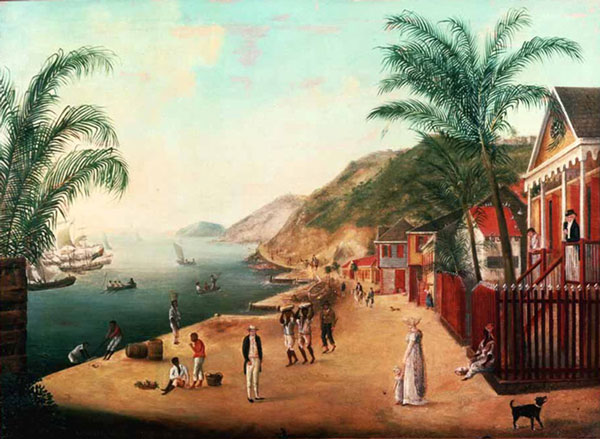| Historical Background |
After years of searching for a possible Swedish colony in the West Indies, the Swedish king, Gustav III, finally succeeded in his negotiations. 1784 France traded the island St. Barthélemy in the West Indies with Sweden in return for some trade rights in the harbour of Gothenburg, Sweden. A town was built on St: Barthélemy, or St Barth as this small island is known today. The town was called Gustavia after the Swedish monarch and was proclaimed a free port in 1785 and quickly became an important base for Swedish and international trade. The town also grew very quickly and Swedes looking for a free port, in more than one way, moved to the island. By the year 1800, Gustavia was one of the largest Swedish towns (counting inhabitants) |
 |
Street scene from Gustavia in the early 19th century. This image has kindly been lent by the Swedish S:t Barthélemy Society |
Obtaining the island coincided with the start of the Swedish Royal West Indian Company. At the beginning of the 18th century, business was flourishing on the island. Different nationalities, cultures, languages and religions formed a very special culture. After political changes, several bad storms and other hardships, the island lost its political and economical importance, and Sweden sold it back to France in 1878. Today, the island is a thriving and popular tourist destination that has kept its free port status and is still part of France, but has achieved a restricted autonomy. More historical information about S:t Barthélemy can be found on: |